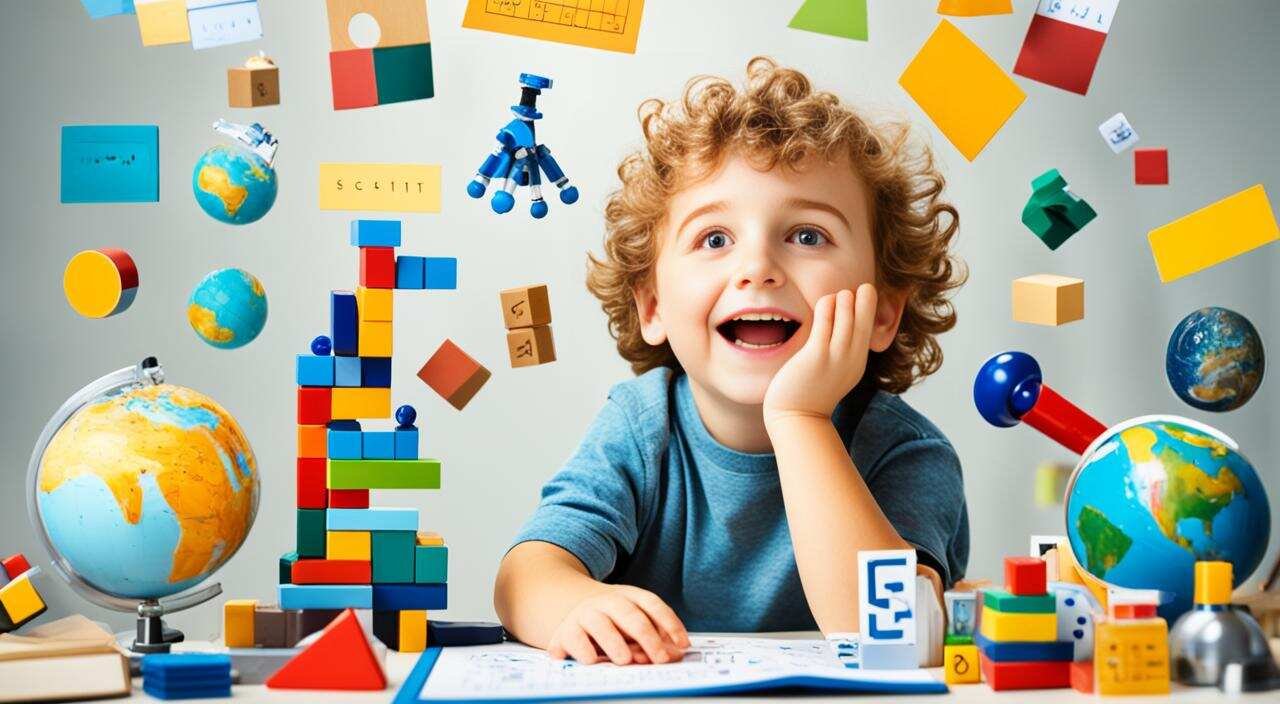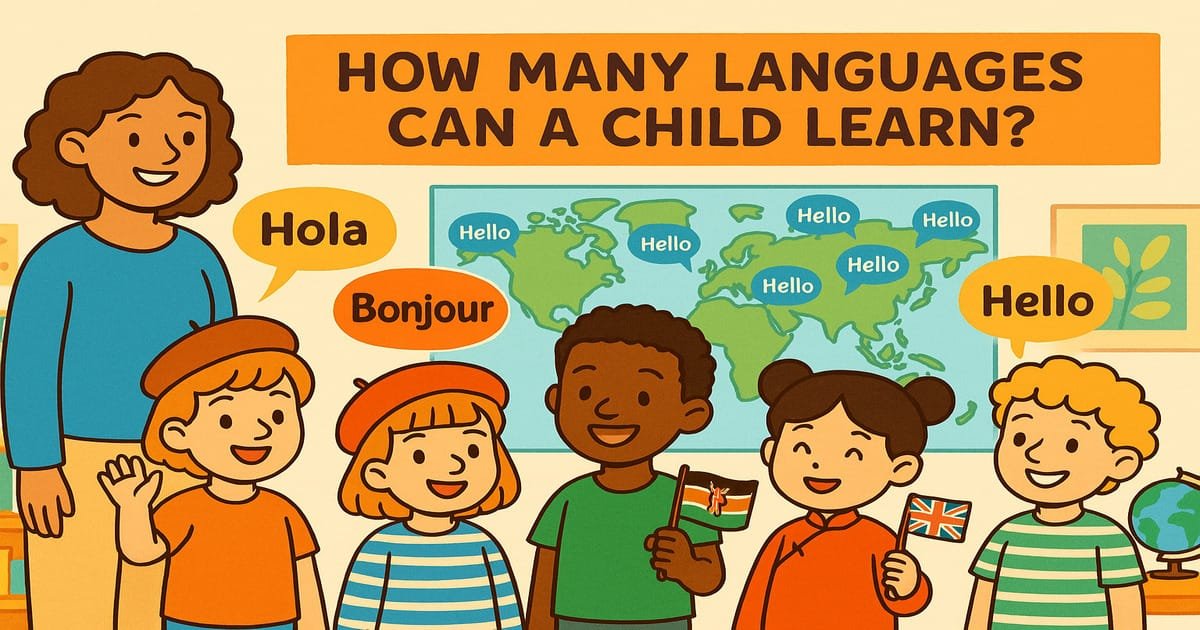Explaining things well to kids is key for both parents and teachers. The most important steps include making complex ideas simple, using visual aids and fun stories, connecting the topic to things they know, staying patient, and adding knowledge slowly. This guide will help you share ideas in ways kids of all ages can easily understand.
Key Takeaways
- Simplify complex ideas for child-friendly explanations
- Use visual aids and engaging storytelling to capture a child’s attention
- Relate new concepts to the child’s own experiences and surroundings
- Practice patience and build foundational knowledge gradually
- Effective communication is key to successful child learning
Understanding the Importance of Effective Communication
Effective communication is crucial for kids’ growth. Communication skills help them express, form friendships, and learn about the world. Starting to build these skills early sets children up for school, making friends, and life.
Why Communication Skills Matter in Child Development
Communication in child development boosts children’s thinking, feelings, and social skills. With the ability to tell others about their thoughts and needs, kids can explore, connect, and learn with confidence.
The Five Types of Communication for Kids
The five main types of communication for kids are:
- Verbal communication (spoken words)
- Nonverbal communication (tone, body language, facial expressions)
- Written communication
- Visual communication (using graphics/visuals)
- Listening skills
Learning these types of communication helps kids express clearly, understand others, and learn key life skills.
| Type of Communication | Description | Importance for Child Development |
|---|---|---|
| Verbal Communication | The use of spoken words to convey meaning and express ideas. | Develops vocabulary, language skills, and the ability to articulate thoughts and feelings. |
| Nonverbal Communication | The use of body language, tone of voice, and facial expressions to communicate without words. | Enhances social and emotional intelligence, allowing children to better understand and respond to the emotions of others. |
| Written Communication | The use of written language to convey information, ideas, and feelings. | Builds literacy skills, critical thinking, and the ability to effectively express oneself in a variety of contexts. |
| Visual Communication | The use of visual aids, such as pictures, diagrams, and graphics, to communicate information. | Supports comprehension, memory, and the ability to learn and process information in engaging, age-appropriate ways. |
| Listening Skills | The ability to actively listen, understand, and respond to verbal and nonverbal cues. | Fosters empathy, emotional awareness, and the capacity to build meaningful connections with others. |
How to Explain Concepts to Children?
Explaining tricky ideas to kids needs a smart mix of skills. First, teach them the basics of talking. This means showing them how to really listen and speak kindly. Through these, they learn to talk clearly and talk about important stuff.
Teaching Basic Communication Skills
Get your child into active listening. This is where they pay attention with their whole body and ask questions. By repeating what you say, they can share their feelings without worry. Also, remind them to use nice words and to avoid saying mean things.
Role-Playing and Engaging Activities
Role-playing is a super fun way to learn. It makes important chat skills easy to understand and use. Mix it up with games like tossing a ball back and forth while you talk. Reading together or talking about your child’s day also helps a lot.
Making the lessons fun and hands-on is key. It’s about teaching skills that can help kids their whole life. When children learn to talk well, they do better in school and with friends. This prep work is the foundation for their future success.
Building a Strong Foundation
Start strong by regularly talking and listening to your child. Always show respect for your child’s feelings. Encourage them to use a “feelings” vocabulary. This helps them say how they feel, which is good for their emotional intelligence and growth.
Talk, Listen, and Respect Your Child’s Feelings
Keep up with talking to your child and listening to them. This shows you care about what they think and feel. It’s an open way to talk about feelings. It makes a safe place for them to share their emotions.
Create a “Feelings” Vocabulary
Doing things like making lists and listening can grow your child’s “feelings” vocabulary. This helps them talk about their feelings. It’s key for communication and emotional growth. When children can say how they feel, they understand their emotions better. This leads to stronger relationships.
Overcoming Communication Barriers

Most kids pick up talking easily. But, not everyone is the same. Some may find it hard to speak because of different challenges. It’s key to be understanding and supportive. Help your child find their voice, no matter the obstacle.
Identifying Physical and Cognitive Challenges
It’s important to recognize if there are any physical or mental issues causing trouble with talking. This could be difficulty hearing, autism, or being a little slower to learn than other kids. A doctor can help figure out what’s going on and suggest what to do next.
Seeking Professional Help and Using Assistive Technology
Once you know the challenge, getting help from professionals is a smart move. Experts like speech therapists or occupational therapists can offer special treatments and advice. Also, tools like communication boards or apps that convert text to speech can be a game changer. These help kids with communication disabilities speak up.
With the right professional help for communication and access to assistive technology, your child can learn to manage communication barriers. This way, they can do well in all kinds of talks and activities.
Enhancing Communication Through Play and Interaction
Play and interacting with others are key in boosting communication and improving a child’s talk skills. Pretend play lets kids be anyone or anything they want. It helps them get creative and feel more sure of themselves.
The Power of Pretend Play
Kids love pretend play because they get to imagine and talk like grown-ups. It’s not just fun; it boosts their social skills too. They learn about sharing, being kind, and making friends through games.
Reading Together and Storytelling
Doing reading together makes chatting easier and richer. It helps kids understand different words and how stories work. Taking turns in storytelling makes their speech and listening stronger. Plus, it teaches them to clearly share their own stories and feelings.
All these activities make talking together more fun and open. They’re great for building a strong bond with your child. And they help kids for life, as they make their way in the world.
Effective Verbal and Nonverbal Strategies
Both effective verbal communication strategies and effective nonverbal communication strategies are crucial when talking to kids. Use active listening. Show you’re interested with your body and ask follow-up questions. This makes kids feel like you’re really listening and understanding them. Reflective listening is also important. It means you repeat what your child says in your own words. This lets them share their feelings without feeling judged.
Active and Reflective Listening
Active listening means staying focused and interacting when your child talks. Maintain eye contact, nod, and ask questions that don’t just need a yes or no answer. It shows your child that you’re really involved. Reflective listening is about repeating what was said to show you get their point and care about how they feel.
Using Positive Reinforcement and “Noticing” Statements
Positive reinforcement and “noticing” positive things in your child’s communication are important. When you give compliments for good behaviors or point out how well they’re expressing themselves, it boosts their confidence. It also teaches them to find their voice and communicate better.
| Effective Verbal Communication Strategies | Effective Nonverbal Communication Strategies |
|---|---|
| Active listening Reflective listening Positive reinforcement “Noticing” statements | Maintaining eye contact Nodding and using open body language Mirroring your child’s tone and pace Facial expressions that convey interest and understanding |
Setting a Positive Example
As a parent, your child looks up to you when it comes to how we talk to others. It’s super important to talk clearly, kindly, and with respect. Show your child by example how to have good interactions and make friends. Setting a positive communication example teaches them a lot.
Modeling Clear and Respectful Communication
Always follow through on your word and use words that are gentle and thoughtful. Truly listen when they speak to you. Doing these things not only sets a good example for clear communication and respectful communication, but it also teaches your child key skills. It helps them learn how to talk well and connect with others in a good way. Show them how it’s done. Show them by leading in communication.
Show the talking skills you want your child to have. Creating a home where good talking happens helps your child learn. They’ll get better at saying what they need, work well with others, and handle being with friends and in groups with more confidence and kindness.
Conclusion
When explaining hard ideas to kids, you need patience and creativity. Make sure to simplify concepts and use pictures and stories. This helps connect the new info to what they know. We should also help them understand their feelings better. This makes learning easier and more fun.
It’s important to overcome any learning barriers. We should show them how to talk clearly and kindly. These skills are key for their future success.
Focusing on good and enjoyable ways to talk will spark a child’s learning. This not only grows their smarts but also their emotions. This article talks about the best ways to talk and teach kids.
Parents and teachers, by being clear and kind in their talks, can help kids a lot. It makes the children ready for a great life. The article gives a good look at talking strategies for children.
FAQ
What are the key strategies for effectively explaining concepts to children?
To explain complex ideas to kids, we simplify and use visual aids. Engaging stories bring these concepts to life. It’s important to connect with the child’s world, be patient, and go step by step.
Why are communication skills important for child development?
Good communication skills help kids express themselves and understand others. They help in making friends and doing well in school. Learning to communicate early sets the path for a successful life.
What are the five main types of communication for kids?
Children mainly communicate through words, tones, and body language. Also, they write, use visuals, and listen. These are vital skills for their development.
How can parents and educators teach basic communication skills to children?
Parents and teachers can teach communication through role-play and conversations. Reading and asking the child to share their day helps too. The goal is to make learning to communicate enjoyable and effective.
Why is it important to talk, listen, and respect a child’s feelings when building a strong communication foundation?
Talking, listening, and respecting how a child feels broadens their emotional understanding. It’s critical for their emotional growth and intelligence.
How can parents and educators help children overcome communication barriers?
Start by consulting a doctor for any hidden physical or mental issues. Therapy and new tech can also support communication development. With the right help, children can learn to communicate well.
How can play and interactive experiences enhance a child’s communication abilities?
Games, books, and stories help children learn to express themselves better. They improve vocabulary and listening, drawing parents and kids closer.
What are some effective verbal and nonverbal communication strategies for explaining concepts to children?
Active and reflective listening are important strategies. Use your body and questions to show you’re listening. Praising your child’s efforts helps too. It promotes confidence in speaking.
How can parents model effective communication for their children?
Parents are the first model of good communication for children. They should speak clearly and kindly. Showing active listening and keeping promises are very important.





